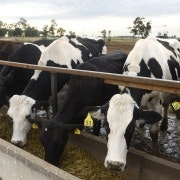The cap doesn't fit Telstra
The Australian Competition and Consumer Commission released last week a discussion paper on a proposed review of Telstra's price control arrangements. Past reviews have shown the price caps on Telstra's baskets of basic fixed line services to be increasingly irrelevant and this one is likely to confirm the view that they are an anachronism.
That makes the review potentially politically sensitive, given that the rationale for spending up to $40 billion on building the National Broadband Network was to end Telstra's dominance of fixed line services, a dominance that presumably should be reflected in pricing power.
The ACCC was directed to review the price controls by the minister for Broadband and Communications Stephen Conroy, who made it clear the government intends to maintain the controls, due to expire on June 30, for a further two years while it considers the impact that the proposed new National Broadband Network will have on pricing policy.
What isn't clear, however, is why the government thinks the price caps on Telstra's fixed line services are still necessary.
Faced with falling numbers of access lines in service and accelerating migration from fixed line services to wireless, it would hardly be in Telstra's interests to raise the cost of its fixed line products, although it might make the transition to the NBN, and NBNCo's economics, somewhat smoother and more attractive if it conditioned consumers to higher telephony costs.
Past reviews of Telstra's compliance with the controls have produced the unexpected conclusion that Telstra has consistently and significantly under-priced the services flowing from its copper network relative to what it was allowed to charge by the regulator.
Under the price controls regime there are a series of baskets of Telstra services, each of which has its own revenue-weighted price cap. The core basket is of local calls, trunk calls, fixed-to-mobile calls, international calls and line rentals. That basket has had a price cap of CPI-CPI, or zero nominal price increases. That same cap has applied to most of Telstra's basic residential products.
In the past, the core basket has attracted price caps of CPI minus 4.5 per cent – forcing significant real price declines each year. Telstra's prices generally fell by more.
The philosophy underpinning the caps is that they are designed to prevent Telstra from using its dominance to extract monopoly rents from services where there has traditionally been little infrastructure-based competition.
By imposing – in earlier times – material real price reductions on Telstra, the controls were supposed to force the telco to continuously improve its efficiency and productivity and then pass the bulk of the gains back to customers.
In practice, Telstra has rarely priced to the levels allowed by the caps. It has forgone hundreds of millions of dollars, if not billions, of revenue by not raising prices to the extent allowed. It wasn't being benevolent, however. It simply couldn't increase the prices without damaging itself.
Since 2005 the copper network's revenues and lines in service have been under growing pressure from the impact of increased competition as competitors have been increasingly able to gain access to Telstra's unconditioned local loop on attractive (from their perspective) terms to install their own infrastructure on Telstra's network.
Substitution of wireless for fixed line services and Telstra's own cannibalisation of its basic services as it has lowered prices on fixed line and fixed broadband services – and, increasingly, emphasised wireless and wireless broadband products – has disciplined its pricing of the capped products and services.
What makes the latest review particularly interesting is that in the past the ACCC, despite the evidence that Telstra wasn't pricing/couldn't price to the level allowed by the caps, considered that competition wasn't sufficiently developed to trust it to deliver competitive outcomes.
More particularly, it wasn't convinced that wireless was anything much more than a marginal competitive force. It regarded wireless and wireless broadband as primarily a complementary service rather than a substitute for fixed line services, a view shared by the proponents of the NBN and one that is probably true for services that require very high speeds.
Late last year, however, in providing an update of progress in its discussions with NBNCo, Telstra downgraded its revenue guidance for 2009-10 as a result of "an accelerated move to wireless-only homes that is impacting revenue in PSTN (copper network) and fixed-lined broadband products."
Telstra itself has been re-pricing its wireless services, including wireless broadband, to meet intense competition within the wireless sector that is driving growth and fixed-to-mobile substitution. It is difficult to maintain the argument that wireless isn't a competitive constraint to pricing of fixed line services.
It is understandable that, with the NBN looming, the government isn't prepared to abolish the safety net of the price controls just yet. Once the NBN has been built in the major urban centres, however, it would become obviously irrelevant.
Unless Conroy and the ACCC want to find another piece of leverage to force Telstra to concede even more at the negotiating table with NBNCo (and Conroy already has foreshadowed a lot of coercive measures that would already be in place if not for Parliament's pre-occupation with the emissions trading scheme last year) the price caps are, however, irrelevant.
History, competition and the growth of wireless have made them redundant. The outcome of the ACCC's review will ultimately be over-shadowed by the ramp of the NBN, but its assessment of the impact of substitution of fixed line services by wireless in disciplining Telstra's actual pricing of fixed line services could be highly relevant to assessments of NBNCo's prospects.















